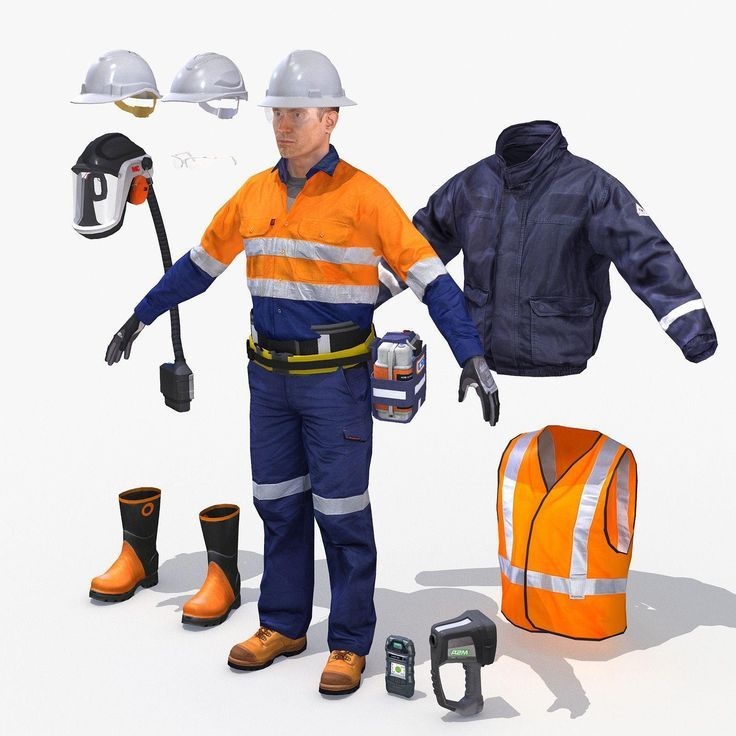Cold weather personal protective equipment (PPE) is essential for ensuring safety and comfort in freezing or low-temperature environments. Here’s an overview of common cold weather PPE and how they function:

1. Insulated Jackets and Parkas
- Materials: Typically made of water-resistant outer shells like nylon or polyester and insulated with materials like down, synthetic fibers, or wool.
- Features: Windproof, waterproof, and insulated to retain body heat. Some may include thermal liners or reflective materials for added visibility.
2. Thermal Gloves
- Materials: Wool, fleece, or synthetic insulation with water-resistant outer layers (like leather or nylon).
- Features: Thermal insulation to prevent frostbite and keep hands warm. Some gloves are touchscreen-compatible for using devices without removing them.
3. Insulated Pants and Bibs
- Materials: Often made from heavy-duty fabrics like Cordura with insulation layers such as Thinsulate or fleece.
- Features: Provide wind and water resistance, designed to trap heat while allowing for flexibility and mobility. Bibs provide additional coverage for the torso.
4. Thermal Base Layers
- Materials: Merino wool, polyester, or other moisture-wicking fabrics.
- Purpose: Worn close to the skin, these layers help regulate body temperature by wicking away sweat and providing insulation.
- Types: Include tops and bottoms, often designed to be lightweight and fitted.
5. Cold-Weather Boots
- Materials: Waterproof materials such as rubber or leather, with insulated linings like fleece or synthetic fibers.
- Features: Thick, insulated soles that provide traction and prevent heat loss from the feet. Some boots have removable liners for easy drying.
6. Head Protection (Balaclavas, Beanies, and Insulated Helmets)
- Materials: Wool, fleece, or synthetic fibers that trap heat.
- Features: Designed to protect the head, face, and neck from wind and cold. Helmets may have built-in insulation or additional liners for cold weather.
7. Cold-Weather Face Masks
- Materials: Neoprene, fleece, or other insulating fabrics.
- Purpose: Cover the nose, mouth, and face to reduce exposure to cold air and wind, often used in conjunction with goggles for eye protection.
8. Eye Protection (Anti-Fog Goggles)
- Features: Designed with anti-fog lenses to prevent condensation in cold conditions and protect the eyes from snow, wind, and cold.
- Purpose: Crucial in blizzard conditions or high winds where visibility is reduced.
9. Heated Clothing
- Features: Some PPE includes battery-powered heated elements to provide extra warmth, commonly found in gloves, jackets, or vests.
10. Thermal Socks
- Materials: Wool, thermal synthetics, or blends designed to retain warmth and wick moisture.
- Features: Often thick with added padding for comfort and protection against frostbite.
11. Reflective or High-Visibility Gear
- Materials: Outer layers or accessories like vests that feature reflective strips or high-visibility colors.
- Purpose: Enhance visibility in low-light winter conditions, such as snowstorms or early evening work shifts.
12. Cold Weather Safety Goggles/Glasses
- Features: Designed to prevent fogging and protect eyes from icy winds, snow, and UV exposure (important in snowy conditions).
Key Standards and Certifications
| PPE Type | Relevant Standard | Key Requirement |
|---|---|---|
| Gloves | EN 511 | Resistance to cold and water penetration |
| Boots | EN ISO 20345 | Insulation and slip resistance |
| Outerwear | EN 343 | Waterproof and breathability |
| Respiratory Gear | EN 143 (P3 filters) | Protection against cold-weather aerosols |
Practical Recommendations
Maintenance: Regularly inspect PPE for wear, especially insulation layers and seals.
Activity Adjustment: Reduce work intensity in extreme cold to minimize sweat production.
Buddy System: Monitor coworkers for signs of hypothermia (shivering, confusion).

